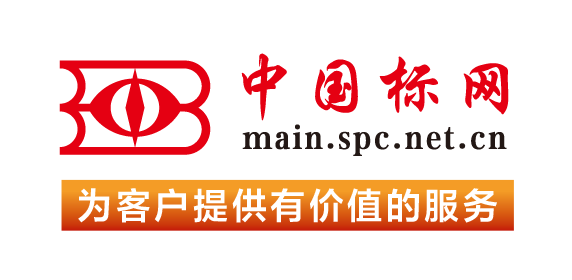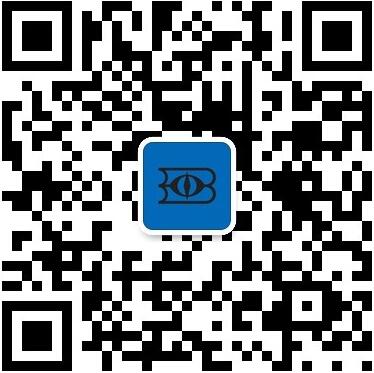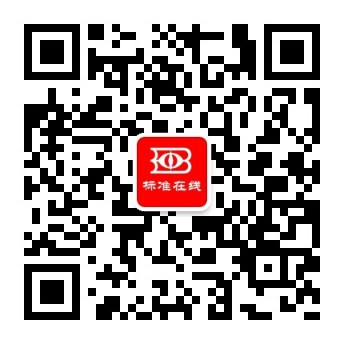1.1 This standard covers performance requirements, test methods, and marking/labeling requirements for special needs shopping carts.1.2 This standard is intended to address special needs shopping carts for use by children and adults with special needs.1.3 This standard does not include any provisions for the use of infant carriers on the special needs shopping cart.1.4 The following precautionary caveat pertains only to the test method portion, Section 7, of this standard. This standard does not purport to address all of the safety concerns, if any, associated with its use. It is the responsibility of the user of this standard to establish appropriate safety, health, and environmental practices and determine the applicability of regulatory limitations prior to use.1.5 This standard is not intended to address restraint systems. It is the manufacturers’ responsibility to determine whether or not a restraint system is required.1.6 This international standard was developed in accordance with internationally recognized principles on standardization established in the Decision on Principles for the Development of International Standards, Guides and Recommendations issued by the World Trade Organization Technical Barriers to Trade (TBT) Committee.
定价: 515元 / 折扣价: 438 元 加购物车
This specification covers hot-wrought and cold-finished special quality carbon steel bars, in straight lengths only, subject to mechanical property requirements and intended for use in manufacturing components for pressure piping and other pressure-containing applications. The steel bars are furnished in Grade B and Grade C and shall be made by melting, deoxidation, hot and cold working, heat treatment, and shall have special quality. Heat and product analyses shall be performed on the material and the chemical composition shall conform to the values required in carbon, manganese, phosphorus, sulfur, silicon, and lead. The carbon steel shall undergo tensile testing and conform to the required tensile strength, yield strength, and elongation.1.1 This specification2 covers hot-wrought and cold-finished special quality carbon steel bars, in straight lengths only, subject to mechanical property requirements and intended for use in manufacturing components for pressure piping and other pressure-containing applications.1.2 The values stated in inch-pound units are to be regarded as standard. The values given in parentheses are mathematical conversions to SI units that are provided for information only and are not considered standard.1.3 This international standard was developed in accordance with internationally recognized principles on standardization established in the Decision on Principles for the Development of International Standards, Guides and Recommendations issued by the World Trade Organization Technical Barriers to Trade (TBT) Committee.
定价: 515元 / 折扣价: 438 元 加购物车
This specification covers the requirements, sizes, construction, tests, and procedures for unused ropes for use by electrical utilities and related industries on energized lines operating at voltages higher than a certain value. Electrical test shall be performed in order to determine the rope's electrical conductivity and resistivity to water. Physical properties such as hardness, diameter, breaking strength, elongation, and melt point shall be determined as well. Rope and strands shall be free from kinks, strand knots, and darting yarns or loose ends (inside yarns which project through cover yarns of strand at intervals along the rope).1.1 This specification covers the requirements, sizes, construction, tests, and procedures for unused ropes for use by electrical utilities and related industries on energized lines operating at voltages higher than 1 kV.1.2 This specification covers the minimum electrical, mechanical, and physical properties guaranteed by the manufacturer and the detailed procedures by which such properties are to be determined. The purchaser has the option to perform or have performed any of these tests in order to verify the guarantee. Claims for failure to meet the specification are subject to verification by the manufacturer.1.3 The rope to which this specification applies is designed to be used in a clean and dry condition, on or near energized lines.1.4 A margin of safety shall be allowed between the maximum voltage and working distances on which it is used and the test voltage and lengths at which it is tested.1.5 It is common practice for the user of this type of equipment to prepare complete instructions and regulations to govern in detail the correct and safe use of such equipment.1.6 The use and maintenance of this equipment is beyond the scope of this specification.1.7 The values stated in SI units are to be regarded as the standard.1.8 The following safety hazards caveat pertains only to the test method portion, Section 11, of this specification: This standard does not purport to address all of the safety concerns, if any, associated with its use. It is the responsibility of the user of this standard to establish appropriate safety, health, and environmental practices and determine the applicability of regulatory limitations prior to use. The test levels used in this standard are for testing under laboratory conditions and are not to be regarded as safe use levels.1.9 This international standard was developed in accordance with internationally recognized principles on standardization established in the Decision on Principles for the Development of International Standards, Guides and Recommendations issued by the World Trade Organization Technical Barriers to Trade (TBT) Committee.
定价: 590元 / 折扣价: 502 元 加购物车
This specification covers composite ribbed steel pipe, precoated and polyethyene lined intended for use for gravity flow sanitary sewers, storm sewers, and other special applications such as water transmission pipe, rehabilitation pipe, slip line pipe, and irrigation pipe. Pipes shall be fabricated in full circular cross-section with helical lock seams and helical ribs projecting outwardly. Specimens cut from production pipe normal to and across the lock seam shall conform to the required values of tensile strength. The pipe shall conform to the required values of nominal inside diameter and sheet thickness. Joint connectors for composite ribbed steel pipe precoated and polyethylene lined shall be specified as soil tight, water-resistant, or watertight.1.1 This specification covers composite ribbed steel pipe, precoated and polyethylene lined intended for use for gravity flow sanitary sewers, storm sewers, and other special applications such as water transmission pipe, rehabilitation pipe, slip line pipe, and irrigation pipe where extra corrosion and abrasion resistance are required. The steel sheet used in the fabrication of the pipe has a polymer coating over a metallic coating of zinc on both sides. In addition, as the pipe is being fabricated, the ribs are filled with polyethylene and then a polyethylene liner is extruded onto the interior surface.1.2 The exterior polymer precoating provides extra protection of the steel against soilside corrosion, in addition to that provided by the metallic coating, and also provides a dielectric barrier for cathodic protection. The interior polymer precoating provides an adhesive layer between the galvanized steel and the polyethylene lining. The applied lining provides internal protection against corrosion, erosion, and abrasion. By filling the rib which has a deltoid shape (smaller at the opening in the pipe wall than at the bottom of the rib), the polyethylene is mechanically connected to the pipe wall and the polyethylene liner is then thermally bonded to the filled rib.1.3 This specification does not include requirements for bedding, backfill, or the relationship between earth cover load and sheet thickness of the pipe. Experience has shown that the successful performance of this product depends upon the proper selection of sheet thickness, type of bedding and backfill, controlled manufacture in the plant, and care in the installation. The installation procedure is described in Practice A798/A798M.1.4 This specification is applicable to orders in either inch-pound units as A978, or in SI units as A978M. Inch-pound units and SI units are not necessarily equivalent. SI units are shown in brackets in the text for clarity, but they are the applicable values when the material is ordered to A978M.1.5 This standard does not purport to address all of the safety concerns, if any, associated with its use. It is the responsibility of the user of this standard to establish appropriate safety and health practices and determine the applicability of regulatory limitations prior to use.
5.1 Measurement results from this test method assists in demonstrating regulatory compliance in such areas as safeguards SNM inventory control, criticality control, waste disposal, and decontamination and decommissioning (D&D). This test method can apply to the measurement of holdup in process equipment or discrete items whose gamma-ray absorption properties may be measured or estimated. This method may be adequate to accurately measure items with complex distributions of radioactive and attenuating material, however, the results are subject to larger measurement uncertainties than measurements of less complex distributions of radioactive material.5.2 Scan—A scan is used to provide a qualitative indication of the extent, location, and the relative quantity of holdup. It can be used to plan or supplement the quantitative measurements.5.3 Nuclide Mapping—Nuclide mapping measures the relative isotopic composition of the holdup at specific locations. It can also be used to detect the presence of radionuclides that emit radiation which could interfere with the assay. Nuclide mapping is best performed using a high resolution detector (such as HPGe) for best nuclide and interference detection. If the holdup is not isotopically homogeneous at the measurement location, that measured isotopic composition will not be a reliable estimate of the bulk isotopic composition.5.4 Quantitative Measurements—These measurements result in quantification of the mass of the measured nuclides in the holdup. They include all the corrections, such as attenuation, and descriptive information, such as isotopic composition, that are available5.4.1 High quality results require detailed knowledge of radiation sources and detectors, transmission of radiation, calibration, facility operations and error analysis. Judicious use of subject matter experts is required (Guide C1490).5.5 Holdup Monitoring—Periodic re-measurement of holdup at a defined point using the same technique and assumptions can be used to detect or track relative changes in the holdup quantity at that point over time. Either a qualitative or a quantitative method can be used.5.6 Indirect Measurements—Quantity of a radionuclide can be determined by measurement of a daughter radionuclide or of a second radionuclide if the ratio of the abundances of the two radionuclides is known and secular equilibrium (Terminology C1673) is present. This can be used when there are interfering gamma rays or when the parent radionuclide does not have a sufficiently strong gamma-ray signal to be readily measured. If this method is employed, it is important that the ratio of the two radionuclides be known with sufficient accuracy to meet assay uncertainty goals.5.7 Mathematical Modeling—Modeling is an aid in the evaluation of complex measurement situations. Measurement data are used with a mathematical model describing the physical location of equipment and materials. (3, 5, 6, 7, 8) .1.1 This test method describes gamma-ray methods used to nondestructively measure the quantity of 235U or 239Pu present as holdup in nuclear facilities. Holdup may occur in any facility where nuclear material is processed, in process equipment, in exhaust ventilation systems and in building walls and floors.1.2 This test method includes information useful for management, planning, selection of equipment, consideration of interferences, measurement program definition, and the utilization of resources (1, 2, 3, 4) .21.3 The measurement of nuclear material hold up in process equipment requires a scientific knowledge of radiation sources and detectors, transmission of radiation, calibration, facility operations and uncertainty analysis. It is subject to the constraints of the facility, management, budget, and schedule; plus health and safety requirements. The measurement process includes defining measurement uncertainties and is sensitive to the form and distribution of the material, various backgrounds, and interferences. The work includes investigation of material distributions within a facility, which could include potentially large holdup surface areas. Nuclear material held up in pipes, ductwork, gloveboxes, and heavy equipment, is usually distributed in a diffuse and irregular manner. It is difficult to define the measurement geometry, to identify the form of the material, and to measure it without interference from adjacent sources of radiation.1.4 This standard does not purport to address all of the safety concerns, if any, associated with its use. It is the responsibility of the user of this standard to establish appropriate safety, health, and environmental practices and determine the applicability of regulatory limitations prior to use.1.5 This international standard was developed in accordance with internationally recognized principles on standardization established in the Decision on Principles for the Development of International Standards, Guides and Recommendations issued by the World Trade Organization Technical Barriers to Trade (TBT) Committee.
定价: 590元 / 折扣价: 502 元 加购物车
 购物车
购物车 400-168-0010
400-168-0010











 对不起,暂未有“special”相关搜索结果!
对不起,暂未有“special”相关搜索结果!













